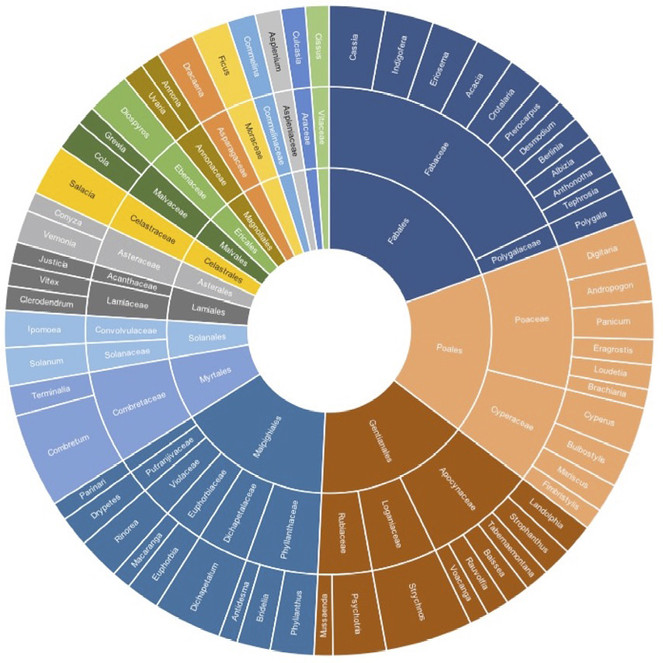|
Biodiversity Information Science and Standards : Conference Abstract
|
|
Corresponding author: Alex Asase (alexasase@gmail.com)
Received: 14 Jun 2019 | Published: 26 Jun 2019
This is an open access article distributed under the terms of the CC0 Public Domain Dedication.
Citation: Asase A, Sainge M, Radji R, Ugbogu O, Townsend Peterson A (2019) A New Model for Efficient, Need-Driven Progress in Generating Primary Biodiversity Information Resources. Biodiversity Information Science and Standards 3: e37340. https://doi.org/10.3897/biss.3.37340
|
|
Abstract
The field of biodiversity informatics has developed rapidly in recent years with broad availability of large-scale information resources. However, online biodiversity information are biased (
Summary of hierarchical taxonomic representation (order, family, genus) of plant genera among data generated as part of the West African Plants initiative for those genera with >500 records. Taxonomic authority is IRMNG (
Keywords
primary biodiversity data, plants, biodiversity informatics, digitization, West Africa
Presenting author
Alex Asase
References
-
Distorted Views of Biodiversity: Spatial and Temporal Bias in Species Occurrence Data.PLoS Biology8(6). https://doi.org/10.1371/journal.pbio.1000385
-
The development of ornithology in Mexico and the importance of access to scientific information.Archives of Natural History43(2):294‑304. https://doi.org/10.3366/anh.2016.0385
-
IRMNG 2006–2016: 10 years of a global taxonomic database.Biodiversity Informatics12https://doi.org/10.17161/bi.v12i0.6522
-
Mapping ignorance: 300 years of collecting flowering plants in Africa.Global Ecology and Biogeography25(9):1085‑1096. https://doi.org/10.1111/geb.12468
